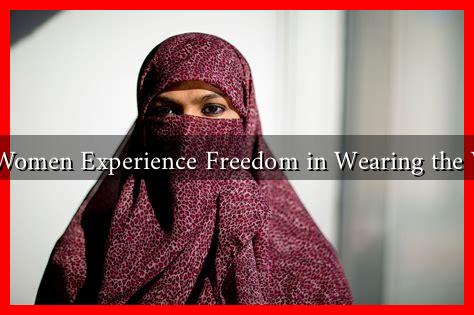-
Table of Contents
Do Women Experience Freedom in Wearing the Veil?
The veil, a garment worn by women in various cultures, particularly in Islamic societies, has been a subject of intense debate regarding freedom, identity, and autonomy. While some women view the veil as a symbol of empowerment and personal choice, others perceive it as a tool of oppression. This article explores the multifaceted nature of wearing the veil, examining the perspectives of women who choose to wear it, the societal implications, and the ongoing discourse surrounding this topic.
The Veil: A Symbol of Identity and Faith
For many women, wearing the veil is deeply intertwined with their cultural and religious identity. The veil can serve as a powerful symbol of faith, representing a commitment to religious principles and values. In this context, women often express that wearing the veil is a personal choice that reflects their beliefs.
- Religious Significance: In Islam, the veil (hijab) is often seen as a means of modesty and a way to fulfill religious obligations. Many women report feeling a sense of spiritual fulfillment when wearing it.
- Cultural Identity: For women from various cultural backgrounds, the veil can signify a connection to their heritage and traditions, fostering a sense of belonging.
- Personal Empowerment: Some women assert that wearing the veil allows them to reclaim their bodies and assert their autonomy in a world that often objectifies women.
Oppression or Choice? The Dichotomy of Perspectives
Despite the positive connotations associated with the veil, there are significant concerns regarding its implications for women’s freedom. Critics argue that in many contexts, the veil is not a choice but rather a societal expectation or a mandate imposed by patriarchal structures.
- Coercion and Control: In some countries, women face legal repercussions for not wearing the veil, suggesting that their freedom is curtailed by state policies.
- Social Pressure: In communities where the veil is the norm, women may feel pressured to conform, leading to a lack of genuine choice.
- Intersectionality: The experience of wearing the veil can vary significantly based on factors such as race, class, and geography, complicating the narrative of choice versus oppression.
Case Studies: Diverse Experiences Across the Globe
To better understand the complexities surrounding the veil, it is essential to examine case studies from different regions:
- France: The ban on wearing the hijab in public schools has sparked debates about secularism and religious freedom. Many Muslim women argue that this law infringes on their personal rights and freedoms.
- Iran: The mandatory hijab law has led to widespread protests, with women advocating for their right to choose whether or not to wear the veil. The movement highlights the struggle for autonomy in a repressive regime.
- Turkey: The lifting of the ban on headscarves in public institutions has been seen as a victory for women’s rights, allowing many to express their religious identity freely.
Statistics and Research Findings
Research indicates that women’s experiences with the veil are diverse and often contradictory. A survey conducted by the Pew Research Center found that:
- 62% of Muslim women in countries like Indonesia and Malaysia view wearing the hijab as a personal choice.
- In contrast, 45% of women in countries like Saudi Arabia report feeling compelled to wear the veil due to societal expectations.
These statistics underscore the importance of context in understanding women’s experiences with the veil. The notion of freedom is not universally applicable; it varies based on individual circumstances and societal norms.
Conclusion: A Complex Tapestry of Freedom and Identity
The question of whether women experience freedom in wearing the veil is not straightforward. It encompasses a spectrum of experiences shaped by cultural, religious, and societal factors. While many women find empowerment and identity in the veil, others face coercion and societal pressure. Ultimately, the discourse surrounding the veil must recognize the diversity of women’s experiences and respect their autonomy in making personal choices.
As societies continue to grapple with issues of gender, identity, and freedom, it is crucial to listen to women’s voices and experiences. Understanding the veil’s significance requires a nuanced approach that acknowledges both the empowerment it can provide and the challenges it may pose.
For further reading on this topic, you can explore resources from the Pew Research Center and other academic studies that delve into the complexities of women’s rights and religious expression.




